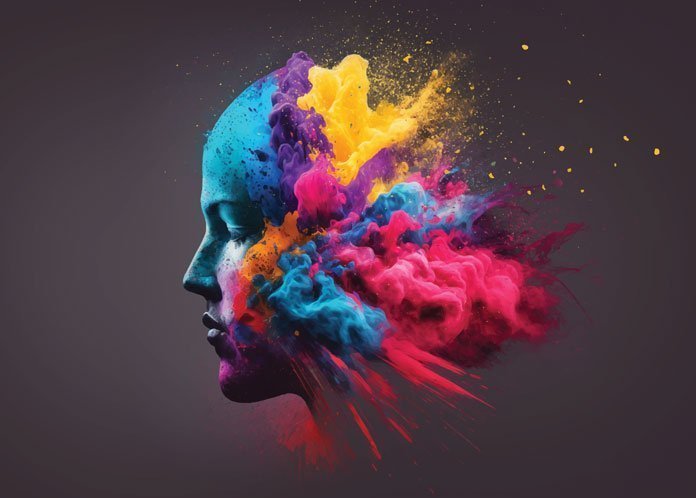 Being human, we all encounter a vast spectrum of emotions. But have you ever blamed a bad mood on the shade of your socks? Or attributed a wave of kindness to a splash of pink on the MRT? Maybe you should, as research shows that colour can play a powerful force in our life, affecting body and mind, and influencing us in more ways than we realise.
Being human, we all encounter a vast spectrum of emotions. But have you ever blamed a bad mood on the shade of your socks? Or attributed a wave of kindness to a splash of pink on the MRT? Maybe you should, as research shows that colour can play a powerful force in our life, affecting body and mind, and influencing us in more ways than we realise.
“When we see colour, it’s more than just a visual experience,” explains Eva Papadakis, personal stylist and colour specialist at Style Your Fashion Soul (@styleyourfashionsoul). “Through scientific and anecdotal experiences, we know that human interaction with colour affects our disposition and physical actions. The part of our brain that interprets colour also controls our thoughts, autonomic nervous system, circadian rhythms, sexual desires, and more.”
Indeed, across cultures we use colour to convey emotional states. We feel blue, see red, or are green with envy. We wear white to weddings, black to funerals (in Asia white is worn), give red hearts on Valentine’s Day and wear red at Chinese New Year. Colour and emotional associations are ubiquitous.
How does it work?
Understanding the power of colour starts with science. “Colour is light, and light is energy which speaks to us in vibrations,” explains Eva, an expat in Singapore who has formally studied colour training and colour and design psychology. “When light enters our eye, it causes the release of hormones that affect our moods, temperature, sleep, and blood pressure, amongst other things. This means that colour is not purely a visual stimulus, but it also constantly creates physical and psychological changes and responses within us, too.”
The International Colour-Emotion Association Survey proves that the colour red has been shown to raise pulse rate, while blue can foster trust and encourage innovative thinking. (Hello ANZA’s primary branding colour!). Statistics show that colour can account for up to 85% of the reason why we choose to buy certain products. Many ancient cultures, including the Egyptians and Chinese, practised chromotherapy (the use of colours to heal), which still takes place today as a holistic health treatment. Yellow is thought to stimulate the nerves and purify the body, indigo can alleviate skin problems, and orange is used to heal the lungs and boost energy.
When we understand more about colours, we can consciously use them to support our emotions and create certain behaviours, not just in ourselves but in others. And the quickest way to do this? Through your wardrobe. Says Eva, “When you wear a palette that’s harmonious with your personal colouring and personality, you’ll feel more at home in your skin in a deep authentic way. Confidence can grow, moods can level out.”

Colour constantly creates physical and psychological responses within us
What to do
The best way to explore which colours work best for you is to compare and contrast different colour dimensions. “Observe how your skin and eyes look next to a certain tones and notice how your physical body reacts – you may feel yourself stiffen or recoil. “Others might bring on a sense of calm or cause you to smile,” Eva continues. “When you’ve found colours and combinations that work for you, you can often feel favourable results instantly. People will compliment you more often, not necessarily on what you’re wearing, but that you look well, or different, and so on.”
With a stronger sense of self, ourFor example, let’s say you work in a young, dynamic, environment, but are older than the majority demographic and favour structured tailoring and darker blues to show gravitas and responsibility. “Adjusting to brighter colours can encourage colleagues to see you as more creative, innovative, and fun. Through consciously working with different tones and combinations, you can encourage a change in your behaviour and how people respond to you.”
And if black is your go-to, note that it’s the total absorption of light. “Black has a quality of glamour (which is why many high-end luxury brands use it), but it can also feel oppressive, heavy, isolated, or menacing,” warns Eva. “However, it also provides the psychological feeling of protection and can make us feel safe. This is why people often reach for it in their wardrobe, as a form of armour.”
Going deeper, when we reach for one shade habitually and reject a wider spectrum of colour in our life, it can also mean that we’re denying aspects of ourselves. According to Eva, this is a sign that “we need to step consciously into colour, which can be challenging for those with aspects of their subconscious buried.”
Stay tuned
As your awareness of colour increases, you’ll start to easily identify the characteristics of specific colours and how they resonate with your personality. Eva suggests keeping a Pinterest board of interiors and fashion you like and changing it seasonally. Doing so will help you become more aware of yourself, the shades you’re selecting or avoiding, and give you the opportunity to reflect on why this might be.
“It’s always worth reevaluating your palette, especially after big life changes such as a move to a new location, a relationship breakup, or if you’ve fallen into unconscious habits with your colour choices,” says Eva.
The beauty is that the power of colour is open to everyone. “Through my work, I’ve seen countless examples of people enhancing their wellbeing and increasing energy levels simply through working more consciously with colour,” Eva continues. “In some instances, just by adjusting the use of colour in their wardrobe, people have subsequently received that overdue promotion at work or had a positive shift in a romantic relationship.”
Now, it’s over to hue.
Chromotherapy research: sciencedirect.com, Product branding: brandminds.com, Colour specifics: limesurvey.org








